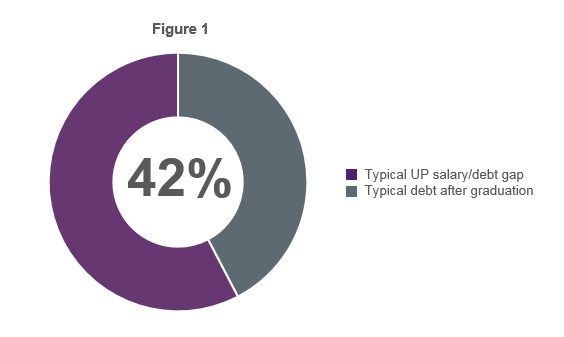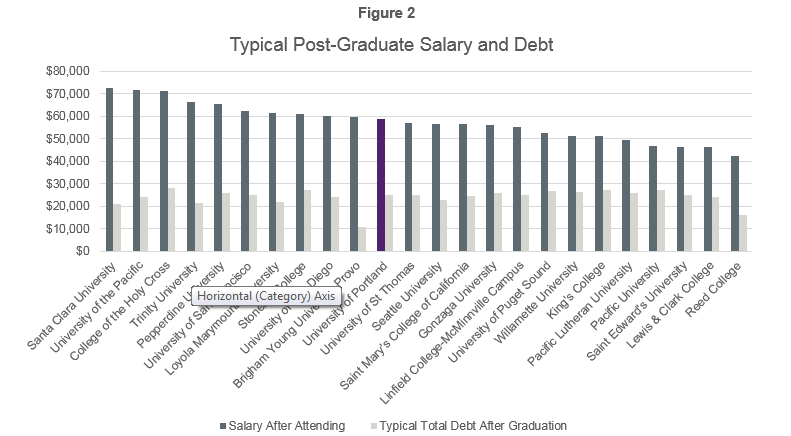
During the 2016-2017 academic year at the University of Portland, 97% of full-time undergraduate students received some type of grant or scholarship aid of an average of $23,736. This covered a little more than half of the tuition and required fees of $44,025 for that academic year. Since then, the cost of tuition for the 2019-2020 academic year increased to $47,478.
Most students depend on student loans to pay for the cost of attending college. According to the College Scorecard website, 47% of UP students have borrowed federal student loans to pay for school, and 87% of them have started paying down their debt within 3 years after school. These students typically graduate with $24,897 in student loan debt, not accounting for PLUS loans or private student loans.
After graduation, many students with federal loan debt ponder on whether they should follow the typical 10-year payment plan or pay off their student loans as quickly as possible. These possibilities depend a lot on salary. Within 10 years of graduating college, the typical University of Portland graduate earns an average salary of $58,800. Th 10-year payment period of $24,897 in loan debt would involve a monthly payment of $265. Based on these numbers, a UP graduate can expect to contribute about 5.41% of their salary toward paying off their student loans with the 10-year payment plan.

Compared to other peer and competitor schools, the University of Portland falls right in the middle when it comes to the annual salary and student debt of a UP graduate. Among this peer group, graduates from Santa Clara University have the highest expected annual salary of $72,600 with $21,000 in student debt (28.9% salary-debt gap) of the expected salary. Brigham Young University (Utah) has the lowest expected student debt of $10,803, which is 18.09% of the expected annual salary of $59,700.

The data used in this article was collected from https://collegescorecard.ed.gov/school/.
